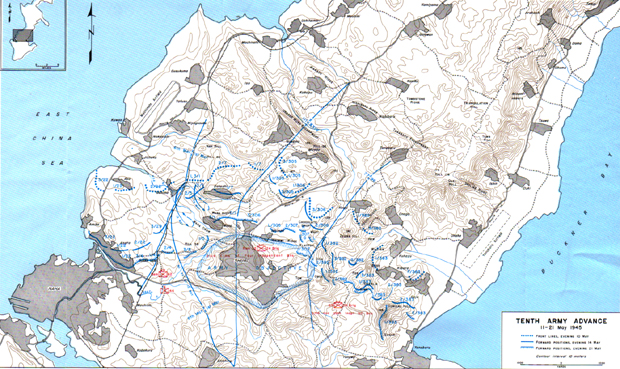On Okinawa, slow American advances and costly Japanese counterattacks continue. Heavy fighting is reported around the Sugar Loaf Hill and Conical Hill positions.
Marines on Sugar Loaf Hill, elements of US 3rd Amphibious Corps, withdraw because of Japanese fire.
The US 1st Marine Division advances along the Wana river valley, west of Shuri, against heavy Japanese resistance.
The US 305th infantry regiment and 77th Divisions, of US 24th Corps, achieve limited progress and have been reduced to 25 percent effectiveness in the fighting.
See Okinawa Map XXXV: Tenth Army Advances, 11-21 May 1945

Campaign Background — Kamikaze!
According Appleman’s OKINAWA:THE LAST BATTLE:
Between 6 April and 22 June there were ten organized (aerial) Kamikaze attacks, employing a total of 1,465 planes as shown below:
Date of Attack…..Total…Navy Planes…..Army Planes
6-7 April……………355…….230…………….125
12-13 April………..185…….125………………60
15-15 April………..165…….120………………45
27-28 April………..115……..65……………….50
3-4 May……………125……..75……………….50
10-11 May………..150……..70……………….80
24-25 May………..165……..65……………..100
27-28 May………..110……..60……………….50
3-7 June…………….50……..20……………….30
21-22 June…………42……..30……………….15
TOTAL
………………………1465………860………………605
In addition, sporadic small-scale suicide attacks were directed against the American fleet by both Army and Navy planes, bringing the total number of suicide sorties during the campaign to 1,900.